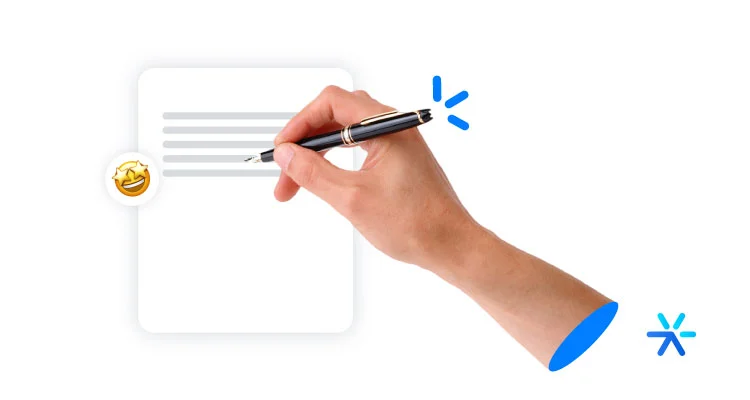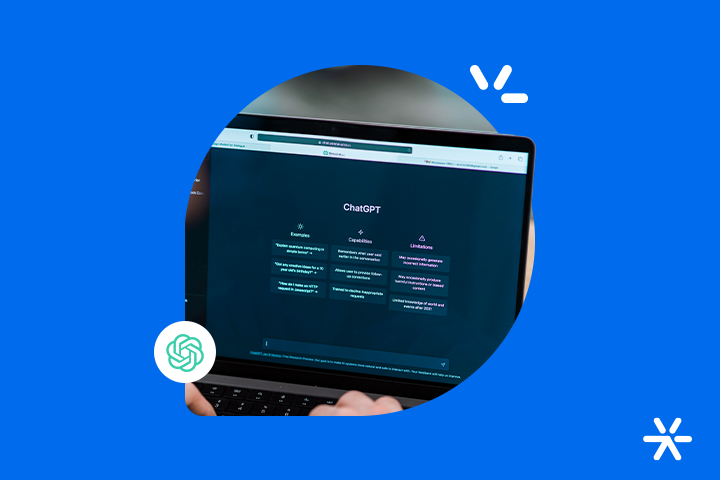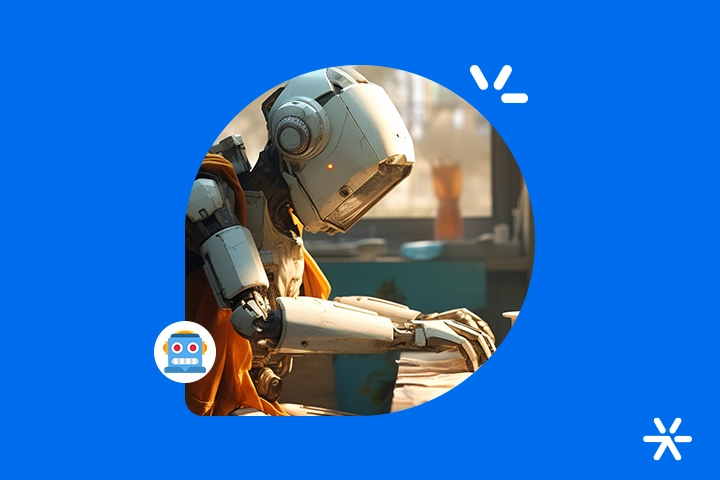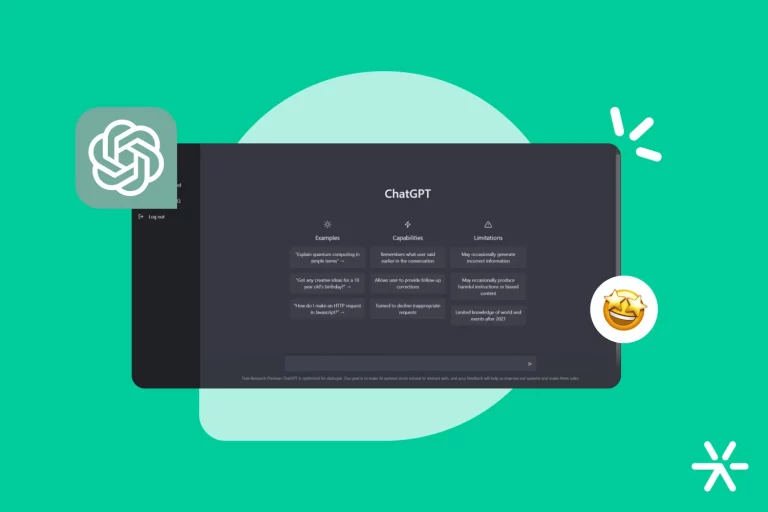Product Descriptions with AI: How to Do It in E-commerce
Product descriptions are among the most labor-intensive tasks in e-commerce.
They aren’t necessarily difficult, but they do have characteristics that make them time-consuming and energy-draining for those writing them.
The specifics of product descriptions in e-commerce demand extra attention from the writer, while the repetitive nature of the task can lead to “auto-pilot” writing.
AI allows writers to save their energy for the creative part, while the repetitive work is handled by the technology.
Today, we’ll discuss how this works. What are the main characteristics and objectives of product descriptions in e-commerce?
Then, we’ll also take a closer look at some AI tools for product descriptions.
Let’s start:
Understanding Product Descriptions (Without AI First)

Before we dive into the more practical part, let’s outline the key aspects of product descriptions.
In other words, what purpose do they serve, and what details ensure this purpose is achieved?
To begin, a brief and simple explanation of what product descriptions really are. Here’s an example from Mercado Livre:
This is the simple description found at the top of the product page, the first thing a user sees when they click on the item. It highlights the product name and its basic features in a straightforward way.
However, scrolling down, we find the main description. Notice how it’s less organized than the first part but offers more detailed information:
This is just a portion of that description. You can find the full version directly on the website.
Some information, such as the fact that the wood used is MDF and the paint is electrostatic, wasn’t in the initial description.
Additionally, this main description is much longer and provides a more detailed breakdown, similar to a product specification sheet, also included in e-commerce sites.
Writers typically receive general product specifications and develop the longer description based on these.
This is the basic understanding of product descriptions in e-commerce. But the main question is: why is this deeper description necessary?
Let’s discuss the reasons below:
SEO
The most obvious reason for well-crafted product descriptions in e-commerce is search engine optimization (SEO).
Most long descriptions, with repeated mentions of the product name and key features (e.g., “this men’s white sock is made of Egyptian cotton, one of the best materials for white socks”) are part of an SEO effort.
The idea is simple: by using the right keywords in the article (which requires prior research), your product has a better chance of appearing on Google.
This has shifted somewhat, especially with Google Shopping and marketplaces. Now, the focus is more on the content itself than just keywords.
Therefore, descriptions don’t need as many keyword repetitions as before. They just need to be highly informative.
In addition to SEO for Google, there’s also a specific SEO for marketplaces.
More on that now:
SEO for Marketplaces
Good product descriptions also help position your product better in marketplace searches.
Our previous example illustrates this well. It was the first result for “side table” on Mercado Livre, and our analysis shows it has:
- A good title with a strong keyword (“side table”);
- A description covering all product features;
- A very complete technical sheet;
- Several different photos;
- Photos of the product’s packaging;
- Sizing information;
- And some other details.
I searched for the last result on the list for the same term. Here’s what’s in that description:
Notice the difference. Only two paragraphs mention the product: the second and the last. The last paragraph only contains a CTA.
A well-crafted product description in e-commerce helps move your product to the top and appears in multiple searches within the marketplace.
The first example demonstrates this; the product shows up not only for the search “side table” but for many others within the marketplace.
Helps with Understanding
The main point about product descriptions is that their primary purpose is to answer questions in a conversational way.
In fact, we often talk about how conversational marketing delivers the best results. Although this is a different topic, it shares the same principle.
Often, those reading a product’s technical description may not understand all the terms.
This is true for more technical products with specific components. For instance, a keyboard with Cherry Red MX switches: those familiar with this feature will understand it, but others may need an explanation, which enriches the product.
Why not include this information in the description?
Notice that this help in understanding can overlap with marketing. Often, it is marketing — but under a different name, content marketing.
Facilitates the Sale
All of the above already helps facilitate sales, right?
But there are other strategies you can use in the description to further increase the likelihood of conversion.
We saw a basic example of this earlier, with a simple CTA at the end of the description.
It can also serve other purposes, such as informing about shipping, delivery times, store reputation, other orders, etc.
In some cases, though, this isn’t necessary, appropriate, or even possible. For instance, a table description should focus on the table’s characteristics. There’s no room for embellishment.
But consider the keyboards we mentioned earlier. They require a higher investment for a small item, which can cause hesitation and uncertainty for the buyer.
For these situations, the description should be more complete and include more than just product details.
How to Write Product Descriptions with AI for E-commerce

We still have some theory to cover, but let’s leave it for after the practical part.
Here, we’ll explore whether there are currently AI tools specialized in creating product descriptions and what sets them apart from ChatGPT itself.
This distinction is important because you can achieve a lot with ChatGPT alone, without needing to pay for GPT-4.
However, the quality of the results you get will be closely tied to the quality of the tool you choose.
In other words: if you use ChatGPT 3.5, the free version, you’ll need to do more editing, not just for language but also for hallucinations and memory errors.
We’ll cover this in the items below. Here’s the structure:
- First, we’ll discuss ChatGPT for AI-driven product descriptions;
- Then we’ll look at tools designed for this task.
Only two items here, but they’ll be thorough. Let’s go:

AI Product Descriptions Using ChatGPT
ChatGPT remains, at least at the time of this article’s publication, the best tool for creating product descriptions with AI.
Not that it’s specifically designed for this; it isn’t. But ChatGPT is the foundation for all the other platforms we’ll review — spoiler alert: there aren’t many.
🔎 Also read: ChatGPT — A Complete Guide – What It Is and How to Use It in Digital Marketing
ChatGPT 4, the paid version, has a much larger memory than the free version. This means you’ll get more accurate results using this model.
This accuracy is related to the AI’s ability to remember your complete prompt.
The prompt for creating a product description with AI will always include a list of the product’s main features.
Over time, intensive use of the free ChatGPT can lead to limitations, with prompts being ignored. This tends to happen just when your energy for editing is at its lowest.
Nonetheless, the free version can still deliver excellent results. I copied the complete description of the first table we analyzed in the article. Here’s the result:
Notice how the result turned out quite similar to the real example. However, some revisions are still necessary.
Simple issues, such as the incorrect color in the product’s features, may appear as errors in the final result. This simple problem would be immediately resolved by the writer, sometimes without even noticing it.
GPT-4 has the same interface and functionality. Its main advantage, in this regard, is the more secure importation of product data.
However, due to platform limitations, it’s still impossible to upload your entire SKU database to the system and request specific descriptions.
This is the domain of AI specifically designed for product descriptions. Let’s discuss these further in the next section, come along:
Product Descriptions Using AI Platforms
We understand, then, that ChatGPT can handle product descriptions quite well—you just need to provide the prompt.
But there’s something crucial it can’t offer: generating product descriptions from your database rather than a prompt.
This is the main differentiator a product description AI platform needs to offer. And this is the most challenging part.
Text.cortex is a tool that promises to perform this task.
Judging by the reviews on the site (which isn’t the best way to benchmark effectively, but it’s what we have), this database function is precisely the differentiator of text.cortex.
Jasper.AI also offers a similar functionality, but with some basic technological constraints.
However, this functionality, while still in its early stages, isn’t very clear about its capabilities. It’s possible to store the entire database, but it’s not clear whether it can generate a product description from scratch using only that database.
In any case, both platforms also feature a simpler prompt creator and allow you to choose from predefined personas or create one yourself.
Nearly all platforms in 2024 fall into this same category. None have yet reached the level where you can request, “Create a description for product X, category Y,” and get it instantly.
Leadster is one of the few AI developers in the Brazilian market offering support based on your knowledge base.
More about this below:
AI for Answering Customer Questions
Leadster has been working hard on developing AI for e-commerce, bringing conversational marketing to much higher levels.
It does not allow for product description creation, but its function is focused directly on customers.
With Leadster.AI, you can include your knowledge base through a scan of pages on your site.
From there, any question a user asks the chatbot will be answered based on what’s on the page.
For example: a very specific piece of information, almost “hidden” among the features. An interested customer didn’t notice it, and instead of abandoning the purchase, they ask the chatbot, which responds immediately.
In addition to this product-oriented function, Leadster.AI can also be used to provide information on shipping, delivery times, and whatever else is in your knowledge base.
Try it for free today by clicking the banner below:
How to Create Product Descriptions with AI?

Creating product descriptions with AI isn’t a particularly complicated task.
Using the platforms, you can simply enter a few keywords related to the description—a more practical approach.
With ChatGPT, you’ll need to copy and paste these product features so that it can generate an appropriate response.
At the same time, it’s essential to note that the review process is critical in all cases.
Here are 5 simple steps to ensure you always get the best results when creating your product descriptions with AI.
Let’s go over them:
Rely on Qualified Professionals
Always rely on qualified professionals to create your product descriptions. This is imperative and absolutely necessary.
You may have noticed throughout the article that we’ve discussed the need to review the result delivered by AI.
Text professionals—specifically e-commerce writers—consider reviewing an essential part of their toolkit.
For this reason, they are the most qualified professionals to identify errors and correct them in the best possible way.
Other professionals will encounter an issue that every writer faces and knows how to handle very well: boredom and discouragement.
Writing a product description is fun and interesting. It’s enjoyable to see what the AI produces.
But the writer is trained for other times—for the twentieth product description of the morning, when the work has become tiring and the novelty factor is gone.
Thus, understanding the importance of a writer is simple: they remain enthusiastic for longer, and even when they become discouraged, their service quality doesn’t decrease.
Create the Best Prompts Based on Product Features
On platforms, you’ll have specific fields to add product information.
Or, for products already on the site, you can scan the page details and create a complete description.
But let’s consider the use of ChatGPT. It’s important to create prompts that make sense not only for the product but also for your site.
The product description we used earlier has a well-defined structure. But what if you want a different type of structure? What if you prefer everything in bullet points instead of a continuous article?
You need to specify all of this in the prompt.
The specialized tools for this job have an advantage: templates. With them, you ensure standardized results and avoid repeatedly specifying everything you want in the prompt.
Review the Result Extensively
This is one of the most critical parts of the job, if not the most important of all.
Reviewing the final result is absolutely essential to ensure the security of the information you’re providing.
And this review doesn’t even need to be overly complex or extensive. You just need to read the result and compare it to the product features.
Consider the following criteria for the review:
- Information accuracy;
- Tone of voice;
- Persona;
- Text quantity;
- Words per paragraph;
- Presentation style;
And other specifics tailored to your needs.
So, what did you think of our tips for creating quality product descriptions with AI?
Try Leadster.AI for free today. With it, you won’t have to worry about answering each customer question. Handle only the most complex inquiries, and the chatbot takes care of the rest.
Remember that not answering may cost you a sale. Let our AI, which uses ChatGPT, understand the question, find the answer, and respond. All within a few minutes.
Try it today. It’s free for 14 days, doesn’t require a credit card, and the entire implementation process takes less than 10 minutes.
I’ll be waiting for you. Thank you for reading!







